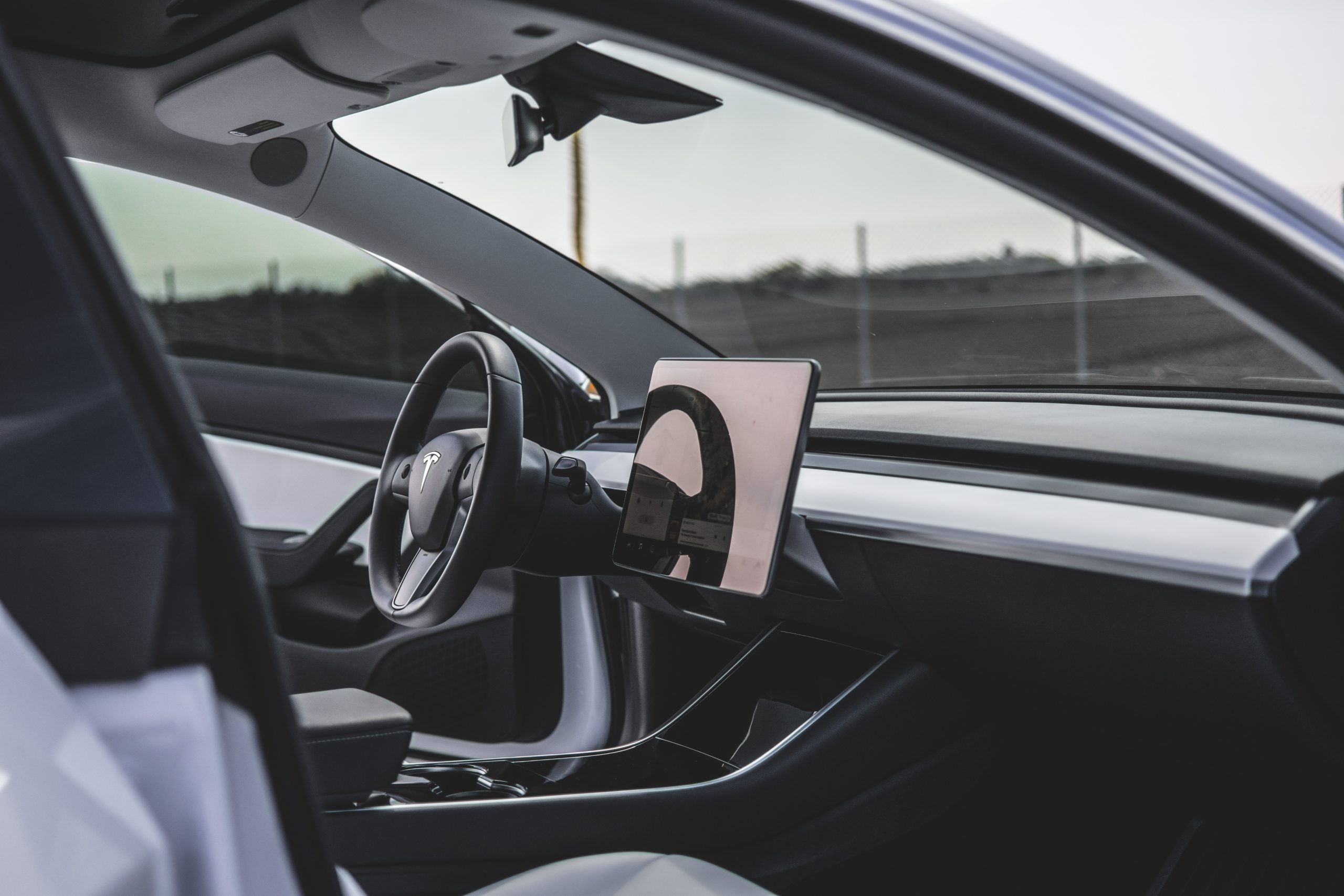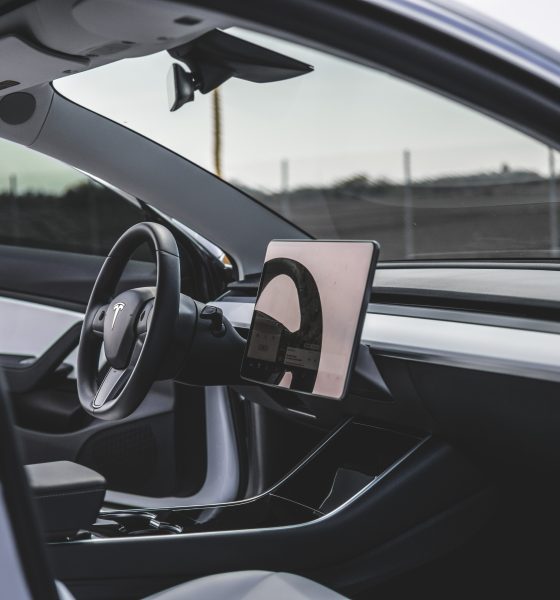Back when the Model 3 was unveiled, Tesla immediately attracted a good amount of criticism over the vehicle’s design. Arguments against the all-electric sedan were many, with arguments being presented against its utilization of a single 15” center display and its hyper-minimalistic interior. The vehicle’s glovebox, which could only be opened through the touchscreen, also attracted its own fair share of eyebrows.
‘Crazy’ and ‘Impractical’ Ideas
To a good number of car enthusiasts, the idea of a glovebox that can’t even be opened manually was insane. Practically all vehicles in the market, from affordable econoboxes from Japan to luxury cars from Germany employ a manual latch for the glovebox, after all. It was something that was so simple, so traditional, and here Tesla was stubbornly refusing to follow along.
It would be pretty easy to put a manual latch on the glovebox, so Tesla’s insistence on an electronically-operated mechanism seemed almost like hubris on the EV maker’s part. Tesla did roll out changes to the Model 3’s glovebox, such as a feature that automatically opens the storage area in the event of a crash. This was rolled out following an incident where a Model 3 was involved in an accident that shattered the 15” display, giving the driver a very difficult time accessing the vehicle’s title and insurance papers.
Over the years, Tesla has added numerous features to the Model 3. These include Sentry Mode, which actively monitors a vehicle’s surroundings, and TeslaCam, which acts as a built-in dashcam for the all-electric sedan on the road. The videos were saved on a flash drive that drivers would need to insert into the front USB port of the Model 3. The feature is incredibly useful, though it requires some work on the part of Tesla’s customers. This was perhaps the reason why the use of features like Sentry Mode and TeslCam are not universally used by drivers. This may change soon with the introduction of the 2021 Model 3.
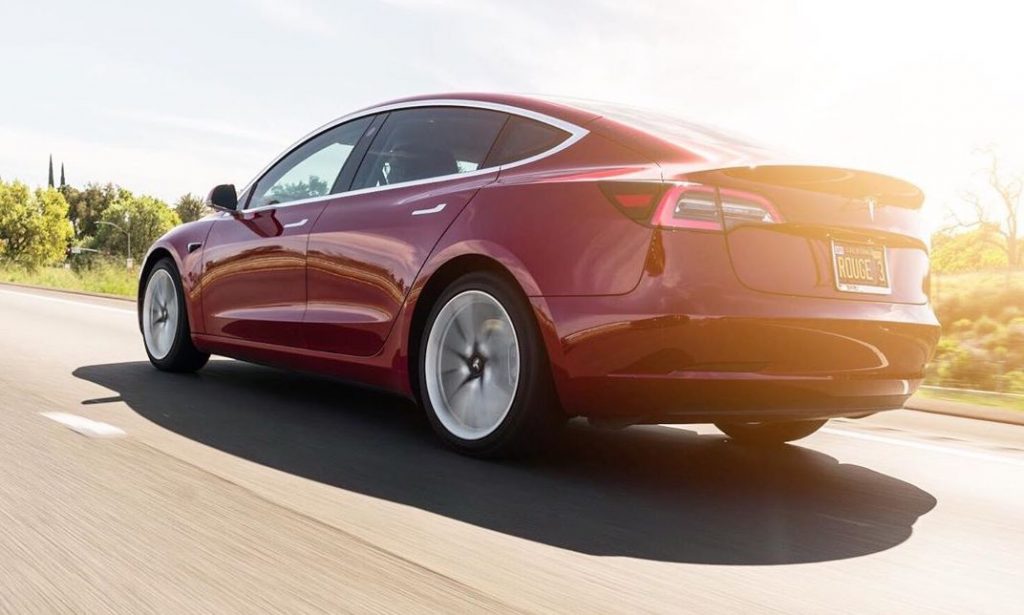
Pieces of a Puzzle
For the Model 3 “refresh,” Tesla introduced a number of key updates, from a new center console and new Aero Wheels to new headlights. Minor updates were also introduced, such as a USB port inside the glovebox. A video from Hong Kong featuring a 2021 Model 3 further revealed that the USB port inside the glovebox already has a 64 GB flash disk in it. This incredibly minor change, which almost feels like an afterthought considering the Model 3’s major updates, makes features like Sentry Mode and TeslaCam much easier to use.
This makes the Model 3 more secure as well, as even thieves that are familiar with Teslas will no longer have any way to access the flash drive that contains the vehicle’s video recordings. Prior to the “refresh,” thieves could simply rip out the flash drive that holds Sentry Mode’s recordings, which is quite unlikely but still plausible. This will no longer be true with the 2021 Model 3, especially as Tesla has already added an extra layer of security in the form of “Glovebox PIN,” which was previously released through an over-the-air software update.
What is quite remarkable is that these improvements would not work as well as they do now if Tesla had included a manual latch for the Model 3’s glovebox. It was difficult to see the point behind Tesla’s stubborn refusal to include something as simple as a physical glovebox latch during the vehicle’s initial launch and release, but it appears that the feature, or lack thereof, was something that would be useful years into the vehicle’s release.
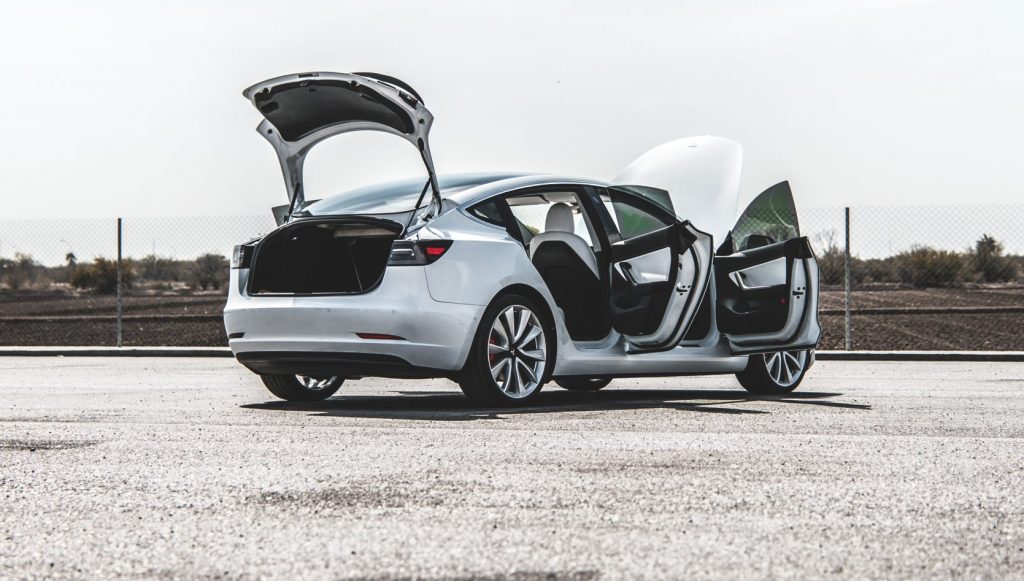
The Long Game
This is something that has become much of a theme in the Tesla story. The company or its CEO does something, and critics pounce on the opportunity to squeeze in a few shots. Products are rolled out and improved through over-the-air updates, and before the dust settles, Tesla and Elon Musk’s once-controversial strategies end up making sense. This was the case with the Model 3’s glovebox, and it would likely be true for other controversial aspects of Tesla’s vehicles as well, such as the Cybertruck’s design and novel features.
Ultimately, this tendency could very well be explained by the fact that Tesla simply looks farther ahead than any of its critics. Tesla skeptics may focus on what the company is doing now, or the state of its products today, but Elon Musk and his team are always looking into the future. This may very well be the reason why even Wall Street analysts seem to have a difficulty understanding Tesla’s business. Just recently, for example, Morgan Stanley upgraded TSLA stock to an “Overweight” rating. According to the financial firm, this is due to Tesla’s business expanding from carmaking to other segments such as software. This is something that longtime TSLA bulls have been highlighting for years.
What is rather interesting is that Tesla may continue to confound skeptics for years to come. Just like the Model 3’s glovebox, the company is still rolling out strategies and products that don’t make sense for skeptics, such as the FSD beta and features like Smart Summon. A look at Autopilot’s subpar scores in tests from organizations such as Consumer Reports highlight this point. Yet just like the humble Model 3 glovebox, perhaps features like Summon could serve a higher purpose years down the road.

Elon Musk
Elon Musk: Tesla Model Y is world’s best-selling car for 3rd year in a row
The Model Y has now established an impressive streak that would otherwise have been impossible before Tesla.

Elon Musk has announced that the Tesla Model Y has become the world’s best-selling car by volume for the third consecutive year, capping 2025 with another dominant performance.
The Model Y has now established an impressive streak that would otherwise have been impossible before Tesla.
Three years in a row
Musk posted on X: “Tesla Model Y is now officially the world’s best-selling car for the third year in a row!” The CEO’s comment echoed an update that Tesla included in its 2025 recap, which highlighted, among other things, the Model Y’s incredible streak.
The Model Y has held the title since 2023, outperforming traditional leaders like the Toyota RAV4 and Corolla thanks to its bang-for-the-buck nature and its stellar combination of practicality, performance, and tech. The Model Y is also lauded as one of the safest vehicles on the road, making it an ideal choice for families in key markets such as China.
An impressive 2025
The Model Y’s sales feat in 2025 is especially impressive considering the introduction of the vehicle’s new variant. Tesla’s changeover to the new Model Y across its global factories resulted in sales being paused for some time in the first quarter. As per Tesla’s Q1 2025 vehicle delivery and production report, “the changeover of Model Y lines across all four of our factories led to the loss of several weeks of production in Q1.”
This suggests that the Model Y’s sales remained strong in 2025 to the point where it could still claim the title of the world’s best-selling vehicle by volume, even with its sales being throttled during the first quarter of the year. It would then be interesting to see just how far the Model Y can go in 2026, especially considering the rollout of new variants like the six-seat extended wheelbase Model Y L, the affordable Model Y Standard, and the top-tier Model Y Performance.
News
Tesla shares epic 2025 recap video, confirms start of Cybercab production
The cinematic montage, posted by the official Tesla account on X, celebrated the company’s progress in EVs, energy, and Robotaxi development.

Tesla has released an epic year-in-review video for 2025, recapping some of its major achievements from refreshed models to autonomy breakthroughs and production ramps.
The cinematic montage, posted by the official Tesla account on X, celebrated the company’s progress in EVs, energy, and Robotaxi development while looking ahead to an even bigger 2026.
Tesla’s 2025 highlights recap
Tesla has had a busy 2025, as highlighted in the recap video. The video opened with Elon Musk explaining the company’s pursuit of sustainable abundance. A number of milestones were then highlighted, such as the rollout of FSD v14, Optimus’ numerous demos, the opening of the Tesla Diner in Hollywood, LA, the completion of the world’s first autonomous car delivery, and the launch of the Robotaxi network in Austin and the San Francisco Bay Area.
Tesla also highlighted several of its accomplishments over the year. As per the company, the Model Y was the year’s best-selling vehicle globally again, and Teslas became more affordable than ever thanks to the Model 3 and Model Y Standard. Other key models were also rolled out, such as the refreshed Model S and X, as well as the new Model Y, the new Model Y Performance, and the six-seat, extended wheelbase Model Y L.
The Megablock was also unveiled during the year, and the Supercharger Network grew by 18%. Over 1 million Powerwalls were also installed during the year, and the Cybertruck became the first EV truck to get both an IIHS Top Safety Pick+ award and an NHTSA 5-Star safety rating.
Cybercab production confirmed
Interestingly enough, Tesla also confirmed in its 2025 recap video that the production of the Cybercab has started. This bodes well for the vehicle, as it could result in the vehicle really being mass-produced in the first half of 2026. Elon Musk confirmed during the 2025 Annual Shareholder Meeting that Cybercab production should earnestly start around April 2026.
Musk has also noted that the Cybercab will be Tesla’s highest-volume vehicle yet, with the company aiming for an annual production rate of about 2 million units. “If you’ve seen the design of the Cybercab line, it doesn’t look like a normal car manufacturing line,” Musk said earlier this year. “It looks like a really high-speed consumer electronics line. In fact, the line will move so fast that actually people can’t even get close to it.”
News
Tesla Cybercab is changing the look of Austin’s roads, and it’s not even in production yet
Videos and photos showed the sleek, two-seat autonomous vehicles navigating traffic.
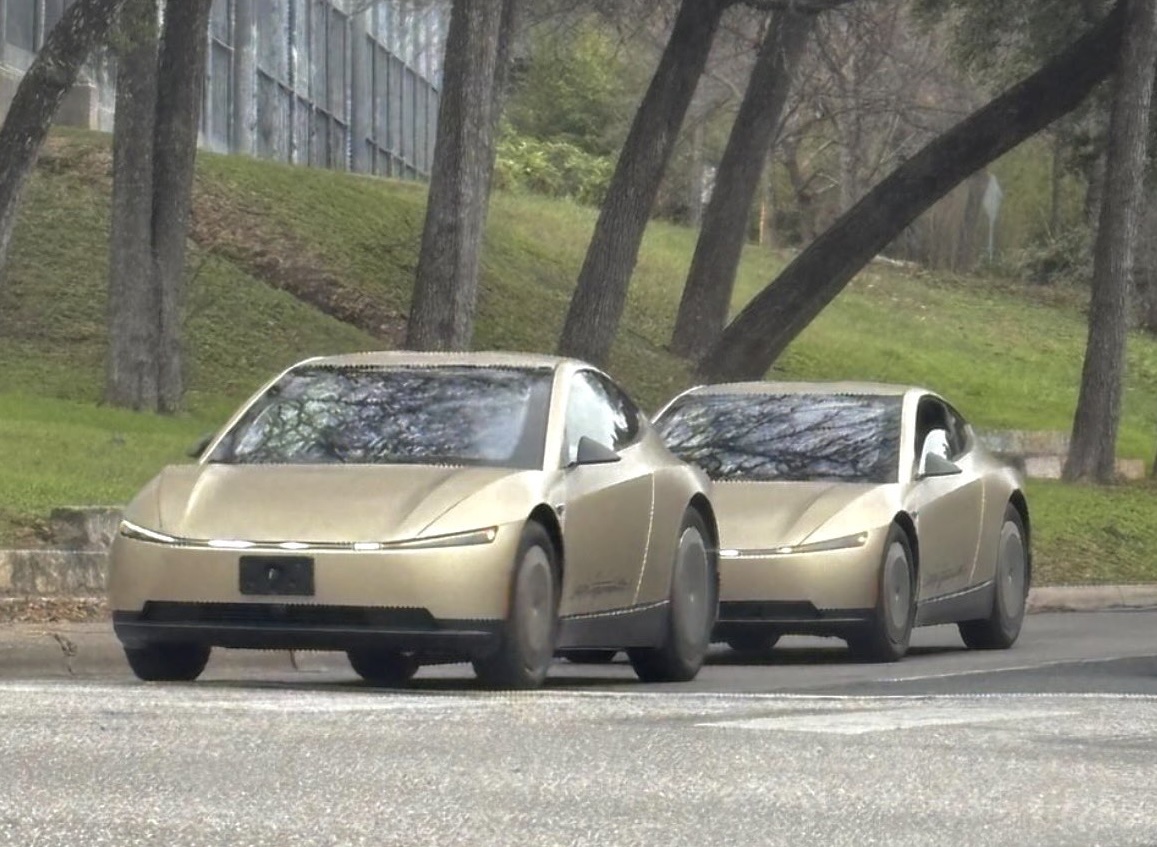
Even before entering production, Tesla’s Cybercab is already transforming the appearance of Austin’s streets, with multiple prototypes spotted testing in downtown areas recently.
Videos and photos showed the sleek, two-seat autonomous vehicles navigating traffic. Interestingly enough, the vehicles were equipped with temporary steering wheels and human safety drivers.
Recent Cybercab sightings
Over the weekend, enthusiasts captured footage of two Cybercabs driving together in central Austin, their futuristic silhouettes standing out amid regular traffic. While the vehicles featured temporary steering wheels and side mirrors for now, they retained their futuristic, production-intent exterior design.
Industry watcher Sawyer Merritt shared one of the vehicles’ videos, noting the increasing frequency of the autonomous two-seater’s sightings.
Previewing the autonomous future
Sightings of the Cybercab have been ramping in several key areas across the United States in recent weeks. Sightings include units at Apple’s Visitor Center in California, the Fremont factory test track, and in Austin’s streets.
The increased activity suggests that Tesla is in overdrive, validating the autonomous two-seater ahead of its planned volume production. Elon Musk confirmed at the 2025 Shareholder Meeting that manufacturing begins around April 2026 with ambitious targets, and during an All-Hands meeting earlier this year, Musk hinted that ultimately, Tesla’s factories should be able to produce one Cybercab every 10 seconds.
